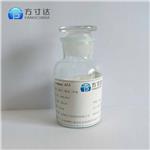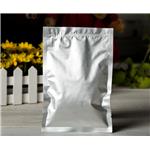1,1,2,2,9,9,10,10-Octafluoro[2.2]paracyclophane is synthesised using 1,4-Bis(bromodifluoromethyl)benzene as a raw material by chemical reaction.
![1,1,2,2,9,9,10,10-Octafluoro[2.2]paracyclophane synthesis 1,1,2,2,9,9,10,10-Octafluoro[2.2]paracyclophane synthesis](/NewsImg/2024-05-07/6385069216580490693860029.png)
1,1,2,2,9,9,10,10-Octafluoro[2.2]paracyclophane can be used:
(1) cross-coupling reactions. 4-iodo-1,1,2,2,9,9,10,10-octafluoro[2.2]paracyclophane is successfully coupled to a variety of arylboronic acids and boronic acid pinacol esters with the exception of sterically-demanding systems such as mesityl. Using the standard Suzuki method, dicyclophane containing two octafluoro[2.2]paracyclophane units separated by one and two benzene rings can be prepared.
(2) Spectroscopic studies. It is an isomer of 1-fluorocyclopropane and has a shorter reaction time compared to 1-fluorocyclopropane. The spectral properties of this compound are similar to those of 1-fluorocyclopropane. Its mass spectrum shows peaks corresponding to molecular ions with m/e=256 and its fragmentation pattern corresponds to monosubstituted aromatic hydrocarbons.
1,1,2,2,9,9,10,10-Octafluoro[2.2]paracyclophane is a synthetic chemical compound used in cross-coupling reactions. It is an isomer of the more common 1-fluorocyclopropane and has been shown to have a shorter reaction time than 1-fluorocyclopropane. The compound's spectroscopic properties are similar to those of 1-fluorocyclopropane. The compound was synthesized by reacting nitrobenzene with cyclopentadiene in the presence of boronic acids and aluminum chloride. The mass spectrum of this compound shows peaks corresponding to the molecular ion at m/e=256, and its fragmentation pattern corresponds to a monosubstituted aromatic hydrocarbon.
![1,1,2,2,9,9,10,10-Octafluoro[2.2]paracyclophane Structure](/CAS/GIF/3345-29-7.gif)
![1,1,2,2,9,9,10,10-Octafluoro[2.2]paracyclophane synthesis 1,1,2,2,9,9,10,10-Octafluoro[2.2]paracyclophane synthesis](/NewsImg/2024-05-07/6385069216580490693860029.png)


